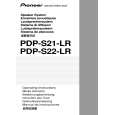|
|
|
Kategorie
|
|
Informacje
|
|
Polecamy
|
|
|
 |
|
|
Dla tego produktu nie napisano jeszcze recenzji!
 ;
Schematy są ale można wysilić się i zrobić kolorowy skan i o większej rozdzielczości. Wtedy schematy płytek będą czytelniejsze. Całość super jako wartość merytoryczna. Wszystkie dane potrzebne do podłączenia różnego rodzajów urządzeń takich gramofon, CD itd.
 ;
Szybko, sprawnie i tanio. Serwis godny polecenia. Będę polecał innym
 ;
Ogólnie jest OK, z wyjątkiem obrazu płyty głównej, który jest miejscami mało czytelny, ale można sobie poradzić.
 ;
Dokładna dokumentacja, pomogła w szybkiej naprawie telewizora. Dziękuję!
 ;
jedyne do czego mogę mieć zastrzeżenie to jakość zdjęć zawartych w przesłanej instrukcji serwisowej ponieważ są fatalnej jakości, praktycznie nieczytelne. tak poza tym jestem zadowolony to jest to czego szukałem.
Button P+ PV+ VMenu
Theoretical voltage 1.5V 2.0V 3.0V 4.0V 1.0V
IC501automatically switches from TV mode to AV1, AV2 by detecting the signal from pin29 or pin8 at the scart connector, through its 56, 55 pins. The picture mode is determined according to the following table: Direct voltage 0 to 2.0 V 2.0 to 7.0 V 7.0 to 12 V Voltage Incrementing 0 to 4.5 V 4.5 to 9.5 9.5 to 12 Picture mode TV mode 16:9 Mode 4:3 Mode
TUNING All the tuning functions are carried by the microprocessor IC501. Three tuning modes are available for this chassis, VST tuning, PLL tuning, and frequency tuning. In all of these both manual and automatic modes are possible. If Auto Tuning Mode is selected the receiver tunes Band 1, Band2, and UHF, putting into memory the channel, signal strength (signal�s amplitude for VST and video indent for PLL), and tuning data of each TV station found. The memories are then stored automatically to put the channels into frequency order from lowest frequency to the highest one. In APS (Auto-Programming-System) TV sets the channels are stored according to the standard tables provided for each country. In VST mode IC501 generates the tuning control voltage as pulse width modulation output at pin54. This pulse operates a voltage switch Q502 converting the 0 to 5V pulse into a 0 to 33V pulses that are then integrated and smoothed by R550/553/ 567 and C548/535/238 to give a steady DC voltage of value between 0 to 33V for tuning control on pin 2 of the tuner. IC501 also controls the band switching of the tuner by pins 12/13/14 via Q505, Q506 and Q507 for the different bands UHF, Band1, and Band2. In both PLL and frequency tuning modes the tuning process is controlled by IC501 via the I²C BUS. In PLL mode a table for all the channels available is set according to the standards and the micro controller uses these values to set the central frequency of the required channel. This mode is quicker that VST mode. Frequency tuning is a new feature to this chassis; it takes the advantages of both VST and PLL tuning. As in PLL mode the tuning process is controlled via I²C bus, however the channels� are not predefined in the software by a table on the con trary these are scanned as in VST but here the frequency changes and not the voltage. In frequency tuning the micro generates I²C signals to account for a 1MHz frequency increment on the tuner and then scan all the frequency either manually or automatically. This method is faster than the VST and more precise than PLL tunings. Automatic fine tuning (AFT) correction voltage is done internally inside IC403 and fed to the microprocessor via I²C BUS. This is used by the software to modify the mark space output at pin 54 producing the tuning voltage. The AFT voltage is also used in tuning mode to identify the presence of a signal whilst tuning. This is used in auto tuning mode to determine the optimum frequency setting for the channel. Tuner AGC voltage from pin 8 of IC403 is taken directly to the tuner. VOLUME CONTROL A pulse width modulation output is developed inside the processor and is fed to the audio processor in stereo sets and to the video processor in mono sets via the I²C BUS to control the volume. The physical control on the front panel works in the same way. TELETEXT The microprocessor IC501 performs all of the teletext functions internally. The Composite Blanking video and Sync signal (CBVS) is input to pin 33 of the micro from pin 29 of IC403. When text is selected the text graphics are output as R.G.B signals on pins 15/16/17 of the micro and fed to pins 34/35/36 of IC403. At the same time pin 18 of the micro goes high taking pin 37 of IC403 high, blanking the picture and selecting text R.G.B. input. Note. mixed mode is available and fast text with 8-page memory. A.V SWITCHING A.V. input can be selected from the remote control or by applying 6 to12 volts from pin 8 of the scart connector, This takes pin 55/56 of the micro high (5 volts). When external A.V input is requested pin 55 or Pin 56 of the micro goes high. This is then transmitted via the I²C bus to IC403, selecting external signals from the scart connector. SERVICE MODE The AK37 chassis incorporates an electronic service mode operated by the micro. Full details are given on pages 20 to 25 of the service manual. The mode is entered by a combination of button presses (4-7-2-5), whilst the Main menu is on the screen. You can select any adjustment and change it. A list of adjustments is available such as OSD position, IF central frequency adjustment, AGC, vertical linearity, size, position, horizontal position, R.G.B gains, APR, tuner settings for PLL tuners, and five options for the TV set features configurations.
17
|
|
 |
> |
|



